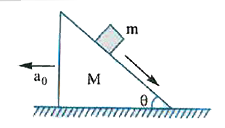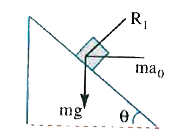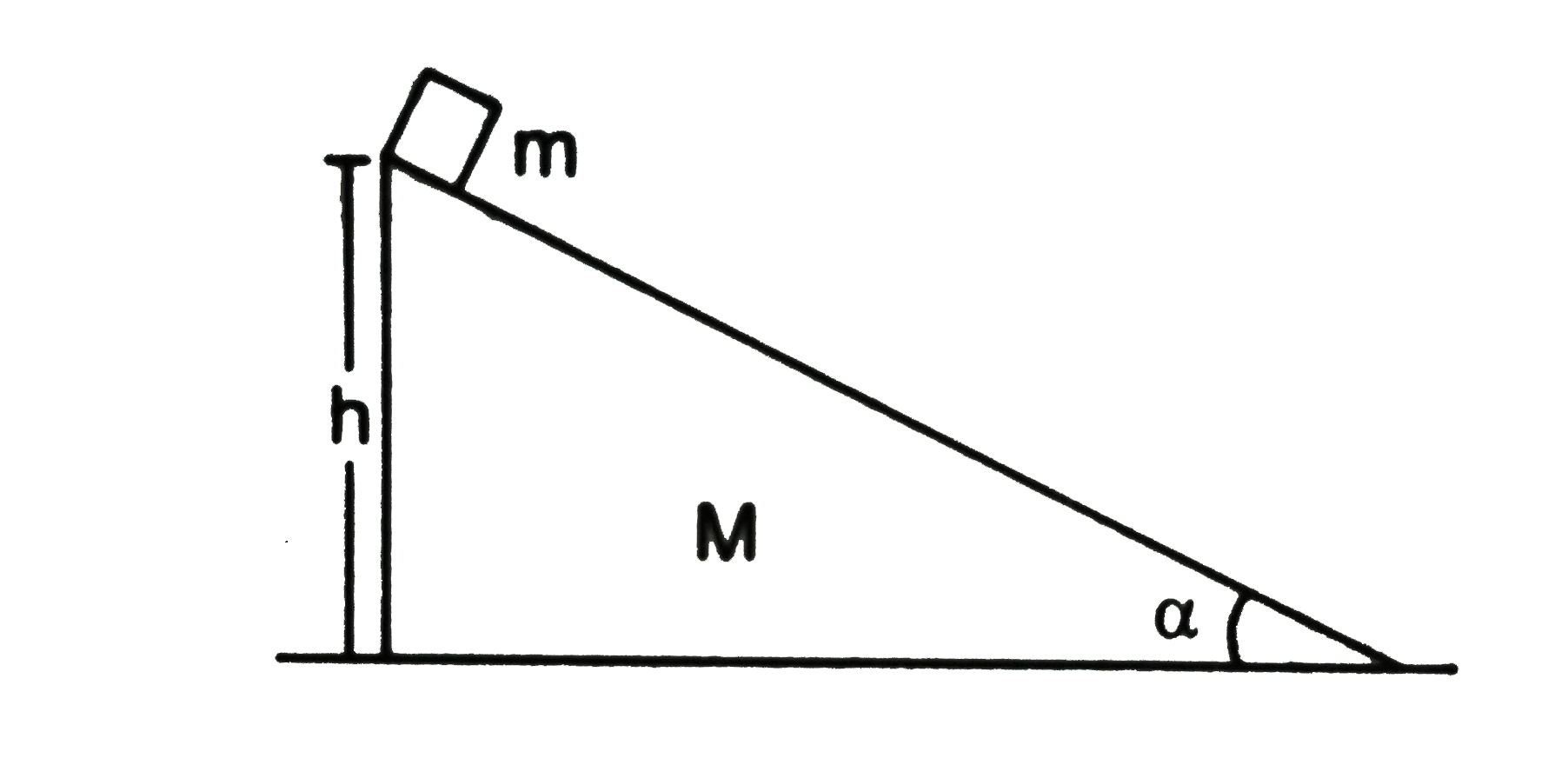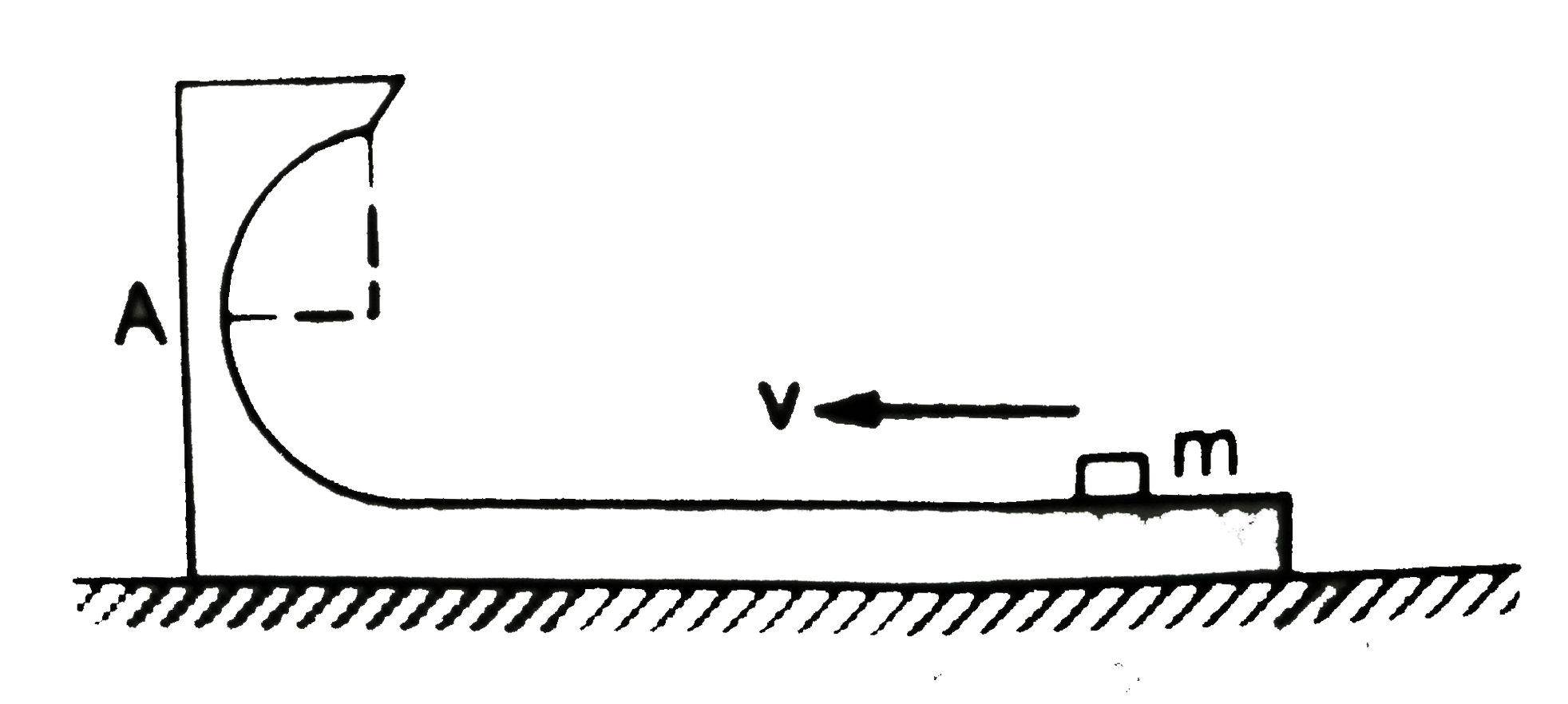A prism of mass M is placed on a horizontal surface . A block of mass m slides on the prism , which in turn slides on the horizontal surface . Assuming all surfaces to be frictionless find the acceleration of block with respect to prism .

Let be the acceleration of prism in the backward direction . The mass .m. is placed on non - inertial frame , therefore it is acted on by fictitious force in the forward direction . The forces acting on mass m are
(i) Weight mg acting downward,
(ii) Normal reaction R,
(iii) Fictitious force .
According free body diagram of .m. is shown in figure .
Suppose block m slides down the prism with acceleration a .
The equation of motion of .m. parallel to incline is
....(1)

The block is in equilibrium perpendicular to incline , so resolving force perpendicular to incline
....(2)
Now we consider the forces acting on the prism . As prism is on ground (inertial frame ) no fectitious force acts on it . The forces on prism are
(i) Weight (Mg) downward.
(ii) Normal force exerted by block
(iii) Normal reaction exerted by ground .
For horizontal motion of prism
....(3)
substituting this value in (2) ,
This gives ....(4)
From (1) ,

Similar Questions
All the surfaces shown in figure are assumed to be frictionless. The block of mass m slides on the prism which in turn slides backward on the horizontal surface. Find the acceleration of the smaller block with respect to the prism.

View SolutionAll the surfaces shownin figure are assumed to be frictionless. The block of mass m slides on the prism which in turn slides backwasrd on the horizontal surface. Find the aceleration of the smaller block with respect to the prism.

View SolutionA small block B of mass m2 is placed on another block A of mass m1 A constant horizontal force F is applied to the block A. All the surfaces are assumed to be frictionless. Find the acceleration of center of mass of the system
View SolutionA block of mas m is placed on a triangular block of mas m, which in tunis placed on a horizontal surface as shown in figure. Assuming frictionless surfaces find the velocity of the triangular block when the smaller block reaches the bottom end.

View SolutionPrism 1 of mass m1 and width angle α (see figure) rests on a horizontal surface. Bar 2 of mass m2 is placed on the prism. Assuming the friction to be negligible, find the acceleration of the prism.

View SolutionA block of mass m is placed at rest on a smooth wedge of mass M placed at rest on a smooth horizontal surface. As the system is released

View SolutionA block of mass m is placed at rest on a smooth wedge of mass M placed at rest on a smooth horizontal surface. As the system is released

View SolutionFigure shows a small block of mass m which is started with a speed v on the horizontal part of the bigger block of mas m placed on a horizontal floor. The curved part of the surface shown is semicircular. All the surfaces are frictionless. Find the speed of the bigger block when the smaller block reaches the point A of the surface.

View SolutionFigure shows a small block of mass m which is started with a speed v on the horizontal part of the bigger block of mas m placed on a horizontal floor. The curved part of the surface shown is semicircular. All the surfaces are frictionless. Find the speed of the bigger block when the smaller block reaches the point A of the surface.

View SolutionA block of mass m is placed on the inclined sufrace of a wedge as shown in fig. Calculate the acceleration of the wedge and the block when the block is released. Assume all surfaces are frictionless.

View Solution
